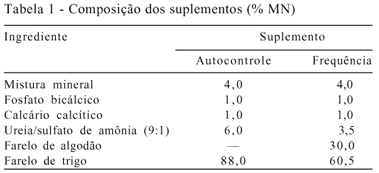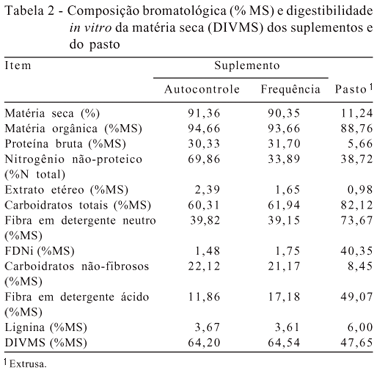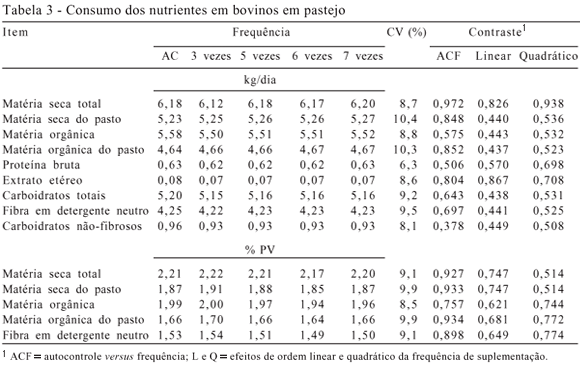The objective of this study was to evaluate the effect of the frequency of protein supplementation on the nutritional characteristics of beef cattle during the dry season. Five Nellore crossbred steer were used 290.0 kg LW, fistulated in the rumen and esophagus, distributed in a 5 × 5 Latin square design. The experimental area consisted of five 0.40 ha Brachiaria decumbens paddocks. The experiment consisted of five 15-day experimental periods, with the first seven days for the animals to adapt. The strategies studied were: self-feed supplementation and supplementation (1.0 kg/animal/day) offered at three frequencies: three times/week (Monday, Wednesday and Friday), five times/week (Monday to Friday) and six times/week (Monday to Saturday) and daily. There were no effects of the different strategies on the intake expressed in kg/day or LW percentage. The supplementation frequency affected the total DM apparent digestibility and ruminal crude protein apparent digestibility that were higher in the self-feed supplementation group. The mean pH values, observed on the day when the animals were not supplemented were: 6.54 ± 0.13; 6.48 ± 0.15 and 6.61 ± 0.07, respectively for, the frequencies 3 times/week, 5 times/ week and 6 times/week. The NH3 concentration was: 14.65 ± 5.78; 13.57 ± 5.30 and 15.30 ± 4.98 mg/dL ruminal liquid, respectively, for the frequencies 3 times/week, 5 times/week and 6 times/week, on days without supplementation. The microbial efficiency and nitrogen concentrations in the urine and serum are affected by the strategies studied and are higher in the animals fed self feed supplementation.
digestibility; frequency of supplementation; intake; self-feed supplementation










